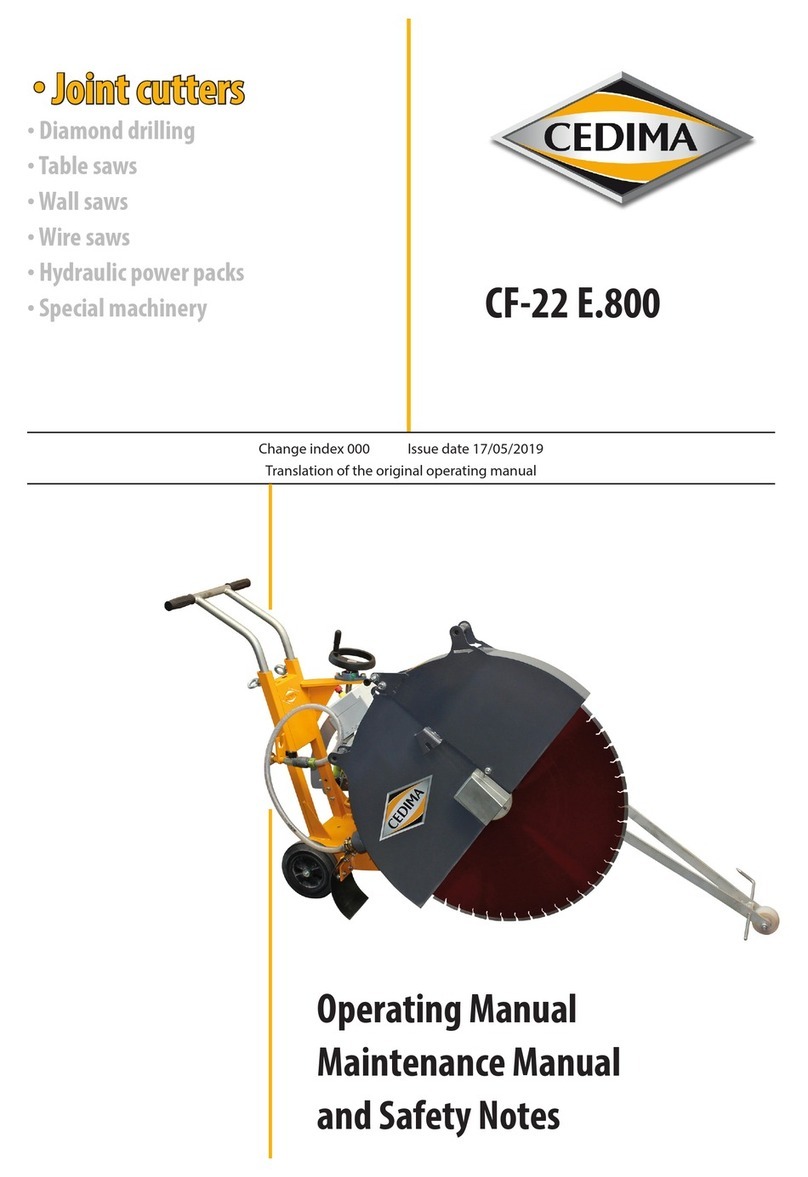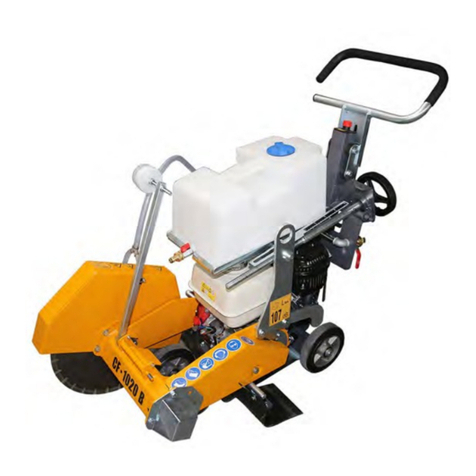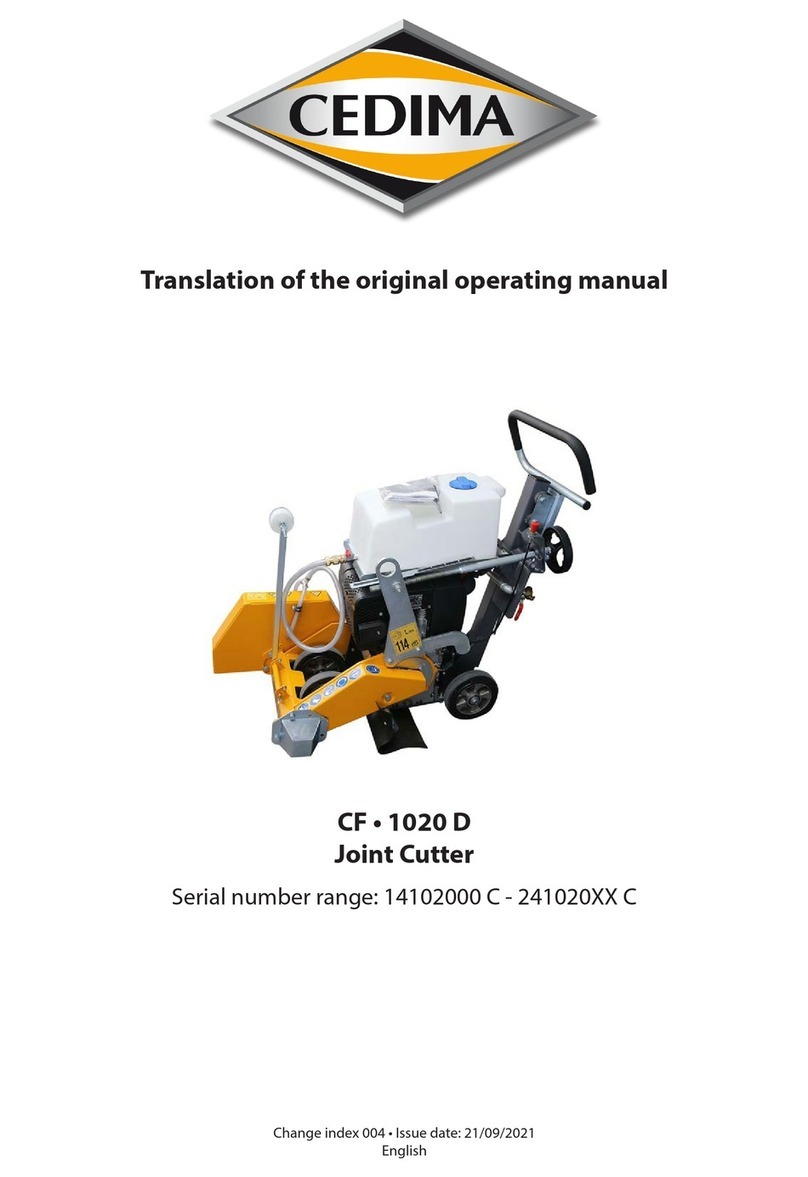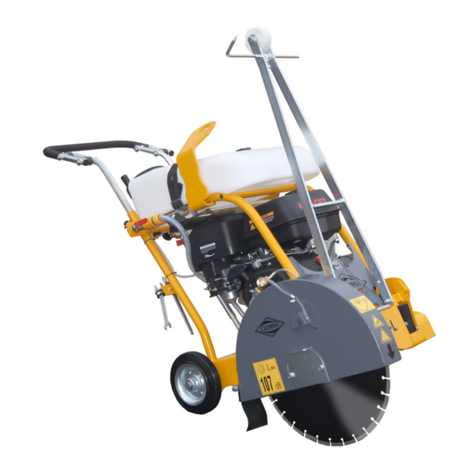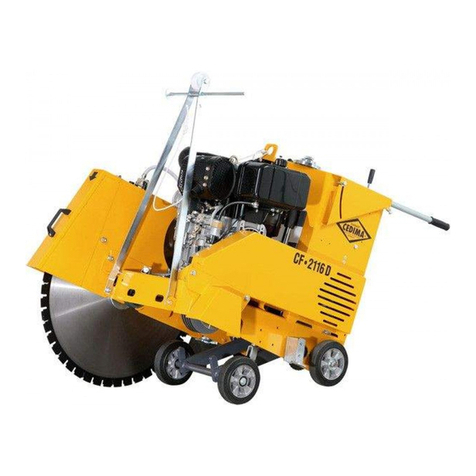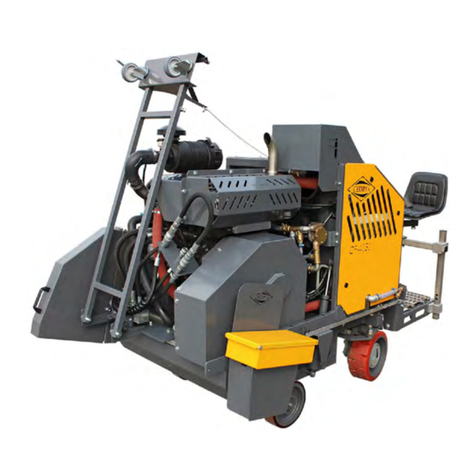
10
• CEDIMA® • Technical Documentation • All rights reserved according to ISO 16016 • Changes serving technical progress reserved •
Basic safety instructions
for joint cutters
3.2.1 Designated use, predictable misuse
3.2.1.1 The joint cutter CF•22 E, in the following referred
to as machine, is exclusively to be used as walk-behind
hand-guided oor cutting machine for cutting by means
of diamond saw blades in wet cutting operation of rmly
installed components made of asphalt, concrete and
abrasive construction material as used e.g. in roadwork,
hall oors and runways! Using the machine for purpo-
ses other than those mentioned above is considered
contrary to its designated use; in particular the use of
the machine with cutting tools other than those appro-
ved by the manufacturer/distributor is prohibited. The
manufacturer/distributor cannot be held liable for any
damage resulting from such use. The risk of such misuse
lies entirely with the user.
3.2.1.2 The machine is not approved for other use than the
one specied herein; this constitutes improper use.
3.2.1.3 Operating the machine within the limits of its
designated use also involves observing the instructions
set out in this operating manual and complying with the
inspection and maintenance directives.
3.2.1.4 The machine has been designed in accordance with
state-of-the-art standards and recognized safety rules.
Nevertheless, its use may constitute a risk to life and limb
of the user or of third parties, or cause damage to the
machine or other material property.
3.2.1.5 The machine must only be used in technically
perfect condition in accordance with its designated use,
the instructions set out in the operating manual and
the relevant national safety regulations, and only by
safety-conscious persons who are fully aware of the risks
involved in operating the machine. Any functional disor-
ders, especially those aecting the safety of the machine,
must therefore be rectied immediately.
3.2.2 Organisational measures
3.2.2.1 This operational manual must always be kept at
the hand at the machine operating site and must be
accessible to operating personnel at all times!
3.2.2.2 In addition to the operating manual, generally
applicable legal and other binding rules and regulations
for accident prevention and environmental protection
must also be observed! Such duties can, for example,
also concern the handling of dangerous substances, the
provision/wearing of safety equipment or road trac
regulations!
3.2.2.3 Additionally this operating manual with instruc-
tions, including supervisory and reporting duties for
taking special plant situations should be observed, e.g.
with regard to work organisation, working procedures,
personnel used, ect.
3.2.2.4 The personnel charged with activities at/on the
machine must have read th
e operating manual prior to
beginning work! This is also especially applicable to per-
sonnel which only works at the machine occasionally (e.g.
during set-up/take down, maintenance work)!
3.2.2.5 Safety and danger-conscious working of the
personnel under observance of the operating manual
must be checked at least occasionally!
3.2.2.6 The personnel must tie back long hair and may not
wear loose clothing or jewellery, including rings! There
is a danger of injury (e.g. by becoming caught or being
pulled in by moving parts)!
3.2.2.7 If necessary or required by regulations, personal
safety equipment must be used (e.g. protective goggles,
hearing protection, safety shoes and safety clothing)!
Corresponding to working conditions, the wearing of
further personal safety equipment (protective clothing)
may be necessary! The accident prevention regulations
must be observed at all times!
3.2.2.8 All safety- and danger warnings at, in and on the
machine must be observed and must always be kept in
proper, legible condition!
3.2.2.9 In case of safety-relevant changes to the machine or
its operation, shut down the machine immediately and
report the fault to the responsible oce/person!
3.2.2.10 Safety equipment at, in or on the machine may
never be removed or rendered inoperative!
3.2.2.11 Changes, attachments and modications to the
machine which could impair safety are not permitted
without the approval of the manufacturer/supplier! This
also applies to the installation and adjustment of safety
equipment, and to welding and drilling on load-bearing
parts!
3.2.2.12 Replace defective or damaged machine parts
immediately! Only use original spare parts!
3.2.2.13
Spare parts and tools must correspond to the
technical requirements set down by the manufacturer/
supplier! This is guaranteed by using original spare parts!
3.2.2.14 The intervals for repetitive testing or inspection
of the machine required by law or specied in this
operating manual must be complied with!
3.2.2.15 Hydraulic hoses must be replaced at the specied
or suitable intervals, even if no safety-relevant defects
are apparent!
3.2.2.16 To conduct maintenance measures, suitable
workshop equipment and corresponding specially
trained personnel are always required!
3.2.2.17 The ability to report and ght re must be ensured,
and all employees must be informed of the location and
operation of extinguishing equipment!






